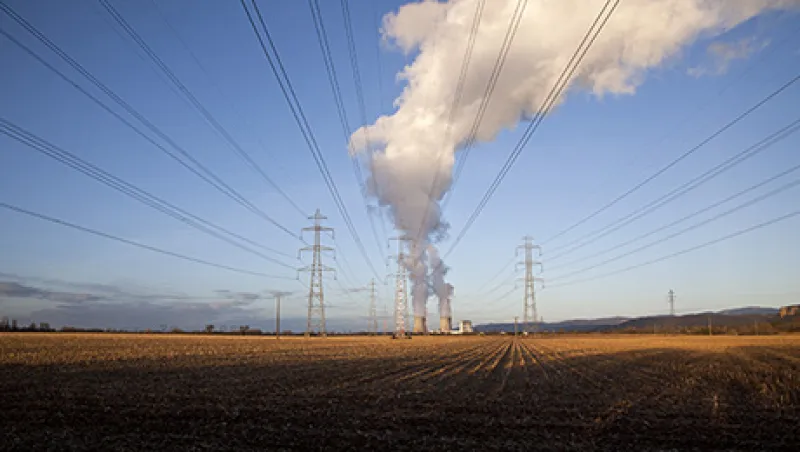If 2013 was the year the green bond market finally took root, 2014 could very well be the one it begins to flourish. One sign of the market’s maturation is the arrival of the first index dedicated entirely to green bonds. The Solactive Green Bond index, launched March 12 by Frankfurt-based index provider Solactive, comprises bonds categorized as green — that is, those that raise capital for a project with specific environmental benefits — by the Climate Bonds Initiative, a nonprofit organization headquartered in London.
To date, the index includes 33 bonds, all at least $100 million in size and of varying credit ratings, with a total market value of $19.3 billion. Most of the bonds have been issued by utilities and energy companies for renewables projects or by supranational organizations, such as the World Bank’s International Finance Corp. , the European Investment Bank and the African Development Bank. The former includes November’s €1.4 billion ($1.9 billion) bond issue from French energy group Electricité de France (EDF), the first euro-denominated green bond from a large company, which was reportedly twice oversubscribed.
The recently issued £250 million ($415 million) bond that hit the market March 19, from London- and Rotterdam, Netherlands–based Unilever, the world’s third-largest consumer goods firm, will also be included.
The Unilever issue marks another first for green bonds and could help turn them from a niche product into a mainstream financial instrument. That's because the company plans to use the proceeds not for a self-evidently green project such as renewable energy but to reduce the environmental footprint of its ordinary activities by decreasing waste, water use and greenhouse-gas emissions.
The Solactive index does not include securitizations, so the company will not add the recent offering from Toyota Motor Corp., the first green auto securitization, launched in late March. Still, this deal can be cited as yet another sign of the market’s development. Backed by future loans and leases of hybrid and electric vehicles, the deal priced at $1.75 billion, more than twice its original $775 million.
“The issue was very well received. It was well understood that Toyota has a good following,” says Michael Eckhart, global head of environmental finance and sustainability for Citigroup in New York, which served as joint book runner along with Bank of America Merrill Lynch and Morgan Stanley. “This broadened the investor base to some extent, bringing socially responsible investors to a Toyota placement for the first time.”
The EDF, Unilever and Toyota issues illustrate a shift in the dynamic of the fixed-income market. Demand is outweighing supply, participants say, though some of that can be attributed to the general appetite for corporate bonds. And whereas institutional investors played the main role in early days of supranational issuance, that has changed over the past year. Now investment managers have taken over as the market’s largest investor group.
Eckhart reckons that Citi’s recent deals have seen roughly 55 percent of allocations come from asset or fund managers, and roughly 45 percent from other investors, such as pensions and insurance companies.
“What I find exciting is that no one’s questioning the fact that [a deal] is green,” says Cathy Roy, senior vice president and CIO of fixed income at Bethesda, Maryland–based sustainable investment firm Calvert Investments and a portfolio manager of the Calvert Green Bond Fund, which launched in October. “They’re not saying, ‘Wait a minute; is it offering enough yield? Am I giving up something?’ The bonds are being issued right in line with any comparable corporate in terms of pricing.”
Judging by numbers from the first quarter of 2014, signs point to continued growth in the green bond market. Data provider Dealogic puts year-to-date global green bond volume at $7.4 billion via 19 issues, a faster pace compared with the 29 bonds totaling $11 billion issued for all of last year, which was already a fivefold increase over 2012. Some experts anticipate that the market will top $50 billion in 2014.
The development of the Green Bond Principles, which were released in January, is likely to drive volume, according to bankers. Drafted by Bank of America Merrill Lynch, Citi, Crédit Agricole CIB and J.P. Morgan and endorsed by scores of other banks, the principles are voluntary guidelines as to what constitutes a green bond, as well as how to report the ways in which the money raised is being spent. This is important because without transparency, investors cannot ensure a company is actually using a green bond issue’s proceeds for environmentally friendly projects.
“[The principles] are what the green bond market needed,” says Citigroup’s Eckhart. “It is working right away, and all the feedback that banks are getting is that there are a large number of deals coming pretty quickly.”
Whether or not the new index will also help facilitate growth remains to be seen. But market participants agree that it is a positive development. “The way the index might support the market’s growth indirectly is that it’s a strong signal that green bonds as an asset type within an asset class have reached a certain maturity and size,” says Manuel Lewin, head of responsible investment at Zurich Insurance Co. in New York. In November the Swiss insurer committed $1 billion to green bonds and appointed BlackRock to run its portfolio. “And it will allow asset managers to think more about offering a product, so that may lead to more growth.”
According to Solactive, which later this year plans to launch a climate-themed bond index, the green bond index is already catching the eye of product developers. “What is great so far is that we have received interest from issuers of structured products; they mean to use the index as the underlying for a capital-guaranteed product,” says Solactive CEO Steffen Scheuble. “We’ve also received interest from an ETF issuer, and we’re currently in discussions with two institutional clients who might be interested.”






